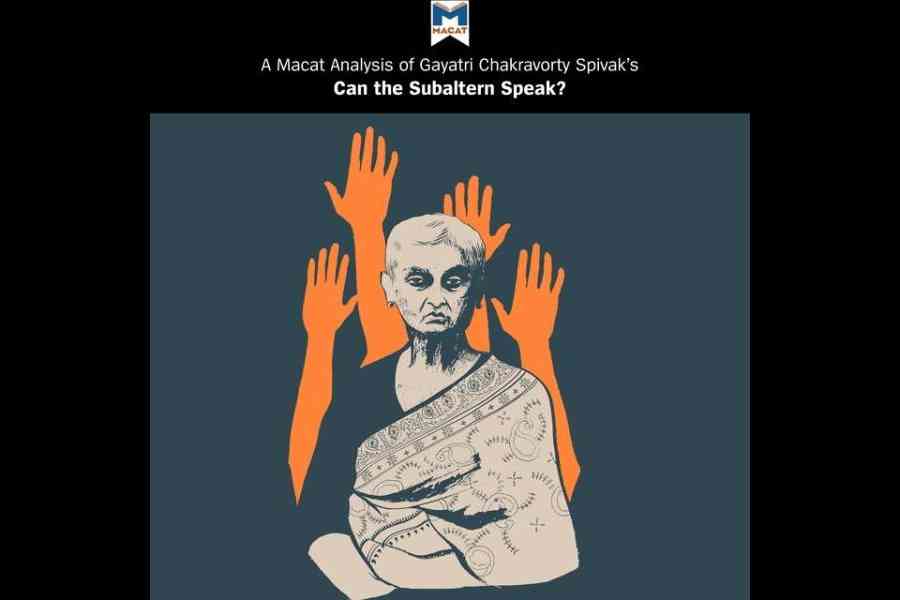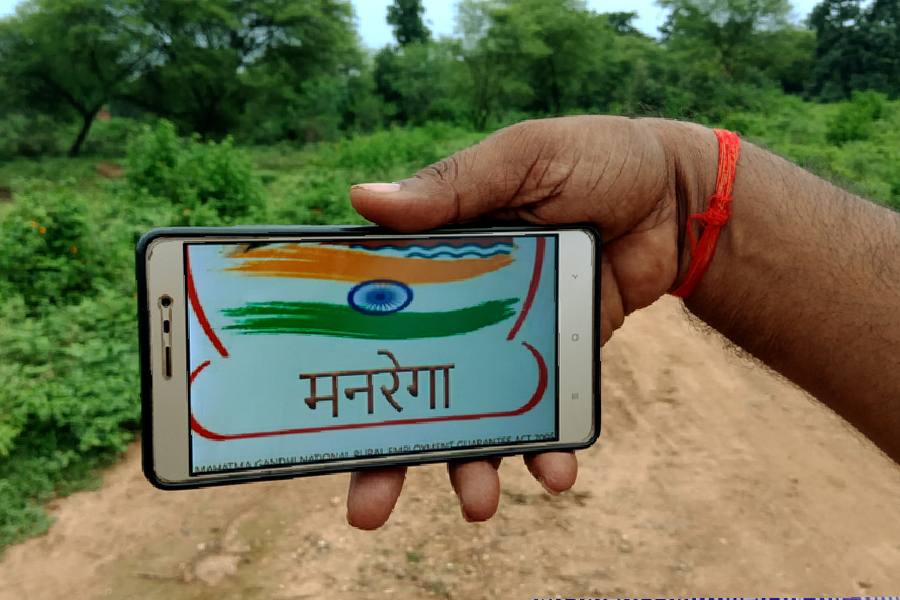Activist, jetsetter, intellectual, philosopher, theorist and diva of Western academia, Gayatri Chakravorty Spivak is once again in the planetary spotlight. Winner of the prestigious Holberg Prize for 2025, she is one star who is still rocking the sari. Not just having carved herself a catwalk that was the place for male academics to strut their stuff over centuries, but built herself a trail where she still blazes her stuff at 83. A professor in humanities at Columbia University in New York, Spivak, an alumna of Calcutta and Cornell universities, has written nine books and edited and translated several others. Often seen in the six-yard fabric wrapped around her stylishly, even paired with combat boots, and a tip in the middle of her forehead, in an American university, Spivak dislikes being exoticised. The most famous story about a Spivak wannabe is the one about someone who dressed like Spivak, came to a costume party in Cairo. In her endearing way, Spivak compassionately wrote this off as “an admiring thing”. Currently working on an ongoing project to publish a bilingual edition of 1,000 years of Bengali literature, supported by South Asian artistes and donors, Spivak has invested four decades of work in democratising education for the rural poor in Bengal, focusing on communities facing deep-rooted cognitive challenges.
I met Prof. Spivak, the phenomenon, a few times, most recently at a lecture during the Covid years. She was speaking on “To Preserve and Revive the Textual Treasures of Bengal” at Salon 175 at The Bengal Club in Calcutta. She knew how to hold a room full of the literati and glitterati to unwavering attention, whether it was here at Asia’s oldest social club or university convocation halls in North America. I recall the large doses of wit and charm she brought to the attendees at The Bengal Club, who could not get enough of her. Spivak has lived her life fearlessly and with flamboyance. Twice married and once in a nine-year relationship with a graduate student, although she has no children, Spivak has the reputation of being an inspirational mother.
I caught her last week at the fag end of the semester, too late in the day to corral her in a long conversation. But her bagging the Holberg Prize, awarded annually by the government of Norway, with a tsunami of accolades in the past, cried out for a celebration of an extraordinary academic. Spivak is one of the most influential global intellectuals today. She continues to shape several fields in an interdisciplinary manner — comparative literature, translation, postcolonial studies, and politics — where her works have been translated into over 20 languages. She has taught and lectured in more than 50 countries and has received 16 honorary doctorates and prizes from across the globe. What are the moments in her trailblazing journey that she found the most challenging? Here’s what she told me: “What is most challenging is that in my Indian village schools as well as Columbia, to undo bad teaching, rote here, and corporative virtue there.”
Spivak was a rebel, always. At seven or eight years of age, she wrote a note and “ran away” from home. Her parents were extremely forward-thinking for the times. Spivak grew up in a modest strata of a middle-class Calcutta family in the 1940s, where her mother Sivani received a Master’s degree in Bengali at the age of 24, looking to improve the lot of the hapless destitute widows. It was “a kind of first nunnery”, Spivak says, under the aegis of the Ramakrishna Mission, and she was running a “women’s hostel”. Spivak lived through the Partition and the terror and aftermath of the British-manufactured Bengal Famine. So with her parents’ highly evolved teachings about life and the horrors of being on the fringes, and her own doors of perception being forced open with the experience of life and letters, it is little wonder that Spivak has become as much a fighter for the struggling masses as any philosopher from Frantz Fanon to Ranajit Guha.
Spivak comes from the first generation of Indian intellectuals after the country’s Independence. She witnessed the heartache of the marginalised. Her father, Pares Chakravorty, was a doctor. “I am, unfortunately, a Brahmin,” Spivak has said in earlier interviews, “but from an inferior sect of the Brahmin caste”. She was born in Calcutta in 1942. She lost her father when she was 13 years old and was forced to think on her feet from a very young age. She studied at Diocesan School for Girls, a fine missionary school, and then went to Presidency College and earned herself a first-class-first BA Honours in English, and received her MA in 1959 from the University of Calcutta. She borrowed money to buy her a passage out to the West. Spivak proceeded to study at the University of Cambridge and Cornell University, where she earned her PhD in 1967.
Why did she choose Cornell to do her PhD? In absolute innocence, she has stated that the only three names of universities she knew were Harvard, Yale and Cornell. She felt Yale and Harvard were “too good” for her, so she went to Cornell. She joined the University of Iowa as an assistant professor.
As early as 1967, she broke all glass ceilings to work on publishing On Grammatology, her English translation of Jacques Derrida’s French original. This was her first milestone and one which would give her entry through many cracks in the doors and bring her friendships like Derrida’s.
In 1985, she published her most famous work, Can the Subaltern Speak?, which would go on to become a seminal text in the academic study of colonialism and Eurocentrism, as well as make her a celebrity in academia. Can the Subaltern Speak? is about the inability of the powerless to express themselves. The experiences of oppressed groups are inevitably distorted by the perspectives of the elite. The term ‘subaltern’ refers to those particularly oppressed by colonial powers, but Spivak also extended the meaning to apply specifically to women in colonial countries. The rare gift to be able to think on her feet earned her envious detractors as well as a huge appreciative fan following.
Since 1986, when she was 44 years old, she began to get passionately engaged in teaching and training adults and children among the “landless illiterates” on the border of West Bengal, Bihar, and Jharkhand. She told me that this honest labour in practical work has allowed her to see the limits of high theory more clearly. “I started the schools hesitantly because Prasanta Rakshit (activist) asked me. I teach intellectual labour, both in India and the US. My Marxism, such as it is, came from a short but intense period of contact with Samar Sen, founder-editor of Frontier, and with reading and teaching Marx,” she states with signature clarity.
Some might argue that the writer-activist Mahasweta Devi’s power and presence as one of the greatest women writers on the planet is owed to Spivak’s magical wordsmithing as she translated her works. When I was discussing a collection of Mahasweta Devi’s short stories, Breast Stories, translated by Spivak, an 18-year-old boy was so shaken by the story Dropdi that he had to leave the class. Spivak worked closely with Mahasweta Devi but they had their ideological differences. What did Spivak learn from Mahasweta Devi? “I learnt how not to fancy myself as a leader,” she says.
Story has it that in 1997, Spivak’s friend Lore Metzger, a survivor of the Nazi regime, left her $10,000 in her will, to help with the work of rural education. With this, she established the Pares Chandra and Sivani Chakravorty Memorial Foundation for Rural Education, to which she contributed the majority of her Kyoto Prize. Does she see any strategies we might deploy to quicken the pace of change to improve the lot of the Dalits and the Adivasis? “Not really. Other-directed humanities education is not very popular now. I teach without hope of immediate change, for the philosophers of the future,” she admits.
Spivak is clear about what teachers must do to improve learning in the humanities: “In the humanities classroom, the teacher must attempt to enter the texture of each student’s mindset, as far as it is possible. And it is also the space of creating collectivities. The teacher must learn to play this contradiction with the students without creating either stress (textural mingling) or confusion (structuring collectivity).”
Spivak’s warmth, love and compassion in the classroom earn her a sizable following. What do you do in a world where it is so tough to get even grad students to read the text? “In the US, it is more the problem of flattery. And in the bottom layer of rural India, academic harshness is cross-hatched by caste and class. Gender is more complicated,” she added.Spivak was significantly impacted by both literary theorists and philosophers Paul de Man and Jacques Derrida. What did she learn from them? “From De Man I learnt to read literally, a tremendously hard task. And from Derrida, the questioning of solutions. Many funny stories too,” she recalls.
Now, after the countless honours, awards and prizes, if she had to live life all over again, is there anything she would change? “No,” she states without hesitation.
How do Spivak’s Sundays look? “I work most Sundays. Sometimes there’s a Hegel reading group in the morning. I sometimes go to redeem bottles to hang out with the subalterns,” she says with her typical wry humour.
How do you ever think the human race will be able to rid itself of racial prejudices that stem from a fear of the other? “Hard to tell,” she says.
Julie Banerjee Mehta is an author of Dance of Life and co-author of the bestselling biography Strongman: The Extraordinary Life of Hun Sen. She has a PhD in English and South Asian Studies from the University of Toronto, where she taught World Literature and Postcolonial Literature for many years. She currently lives in Calcutta and teaches Masters English at Loreto College, is Literary Columnist for t2 and conceptualises and curates the Rising Asia Literary Circle










